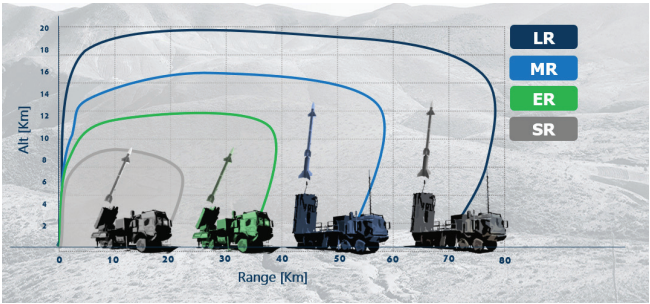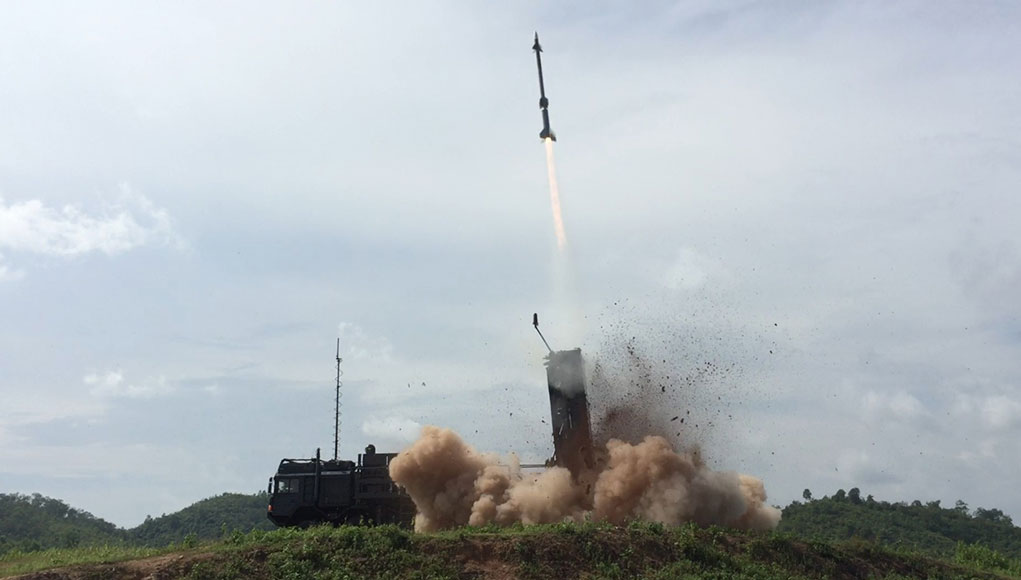Rafael Advanced Defense Systems has announced it has enhanced its SPYDER air defense system with a Counter-TBM (tactical ballistic missiles) capability. The enhancement was developed in response to urgent operational requests from several customers. The program will extend the capabilities of the SPYDER’s effectors and implement various Counter-TBM derivatives across the system.
“This extremely important Counter-TBM feature will be offered as an option in the SPYDER’s toolbox. Under the SPYDER’s tailor-made solution paradigm, this capability will be offered as a cost-effective option to our valuable customers with respective urgent operational needs.” Executive Vice President and General Manager Air & Missile Defense Systems Division Brig. Gen. (Res.) Pinhas Yungman said.
Rafael’s Counter-TBM SPYDER program is based on research and analysis of lessons learned from recent and ongoing armed conflicts involving extensive use of tactical ballistic missiles. The program has upgraded the SPYDER system, which involves hardware and software updates to the system and its DERBY-LR interceptors. While the new features were added, all the system’s existing capabilities were retained, enabling all users to continue using Spyder systems while adding new applications. The system adds to Rafael’s C-RAM/C-TBM capability which is already addressed by David’s Sling and Iron Dome systems, offering solutions at different levels of performance and affordability.
DERBY-LR can intercept targets at an altitude of 50,000 to 60,000 ft at a maximum range of 80 km. The DERBY-LR is based on Rafael’s I-Derby ER, with a booster that more than doubles its engagement range from 40 to 80 km. Another air defense system from Rafael – David’s Sling, uses a bespoke interceptor to intercept ballistic and cruise missiles at ranges of 150 km and beyond, while Iron Dome the company’s C-RAM system, is designed to meet these threats at shorter ranges, but can also face large salvos.
Subscribe to read the full coverage

Each system has autonomous capabilities to detect threats and engage targets over 360°, within seconds of the target being declared hostile, in all-weather, multi-launch, and net-centric capabilities. All the SPYDER systems have multiple target engagement capabilities for handling saturation attacks.
In addition to the booster, the missile has a dual-pulse rocket motor, which enables optimal thrust management throughout the mission. The missile’s brain contains sophisticated algorithms to optimize trajectory according to launch conditions and target behavior. The missile uses Rafael’s software-controlled radar seeker, which allows full operational flexibility by controlling all operational parameters through software.
This capability enables upgraded missile performance against new threats, such as Electronic Warfare (EW) and new emerging aerial platforms. The software update process is quick and simple and can be performed promptly during combat operations. The missile also uses a two-way communication based on Rafael’s proven operational BNET Software-Defined Radio (SDR) family. The SPYDER Air Defense System has been widely exported to 10 countries worldwide, including the NATO-member Czech Republic. Finland is also interested in the system but has not publicly announced its decision.
SPYDER is an air transportable, quick reaction, surface-to-air missile system designed to counter attacks by aircraft, helicopters, UAVs, and precision-guided munitions. With the new upgrade, it is also capable of intercepting TBM. A Spyder LR system includes a truck-mounted radar, 3-6 missile firing units (MFU), and support vehicles. [/wlm_is member]





















